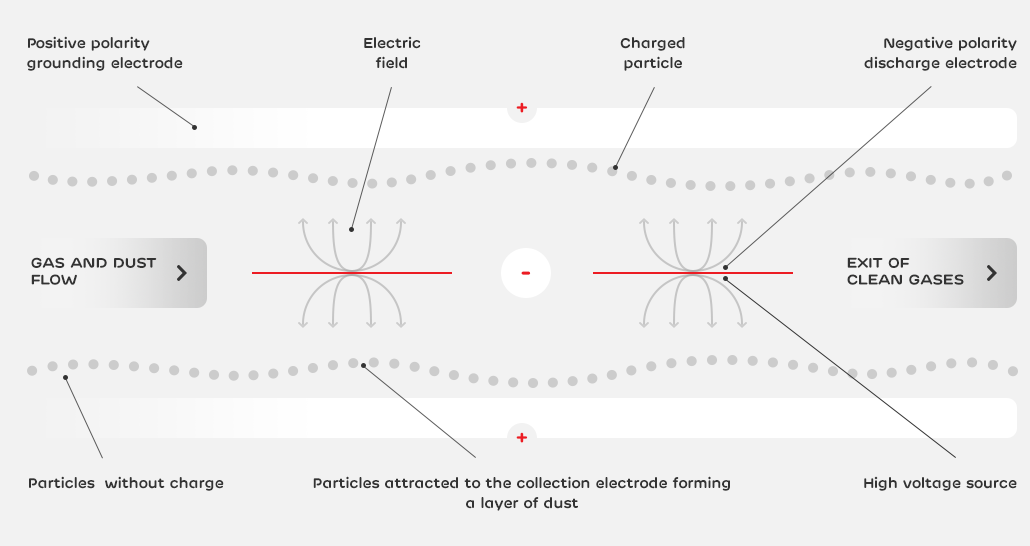Solid Particles
The particles are classified by their size
PM10 (< 10 microns)
May be of anthropogenic (human) or natural origin (such as dust from the Sahara desert)
PM2.5 (< 2.5 microns)
Anthropogenic origin (human activity). More dangerous due to a greater possibility to enter the respiratory tract
Coal-fired power plants are an example of a particle-emitting source. It is necessary to install debugging systems.

Mechanical separators (cyclones)
Electrostatic separators
Wet separators (scrubbers)
Gas filters
What system is used in EDP Coal thermal power stations?
Electrostatic plate precipitators are used.
Did you know ...?
Electrostatic Precipitators retain up to 99% of the particles?
Electrostatic precipitators consist of three main parts
1
An electrical equipment that allows to create the electrostatic field.
2
The precipitator itself, a box that contains the electrodes (steel cables make negative electrodes, and plates make positive electrodes), between which smoke circulates to purify.
3
Auxiliaries: hammers hitting the electrodes and hoppers to collect the particles.
How does the precipitator work?

1
Steel cables ionize the air around them and thus transfer negative charge to the smoke particles.
2
The particles, now negatively charged, are attracted by the positive electrode (the plates), being deposited on them.
3
The particles deposited on the plates are detached by a periodic beating system (hammers) and go to the storage hoppers of the precipitator itself.
In coal-fired power plants, the trapped particles of humans are called ASHES